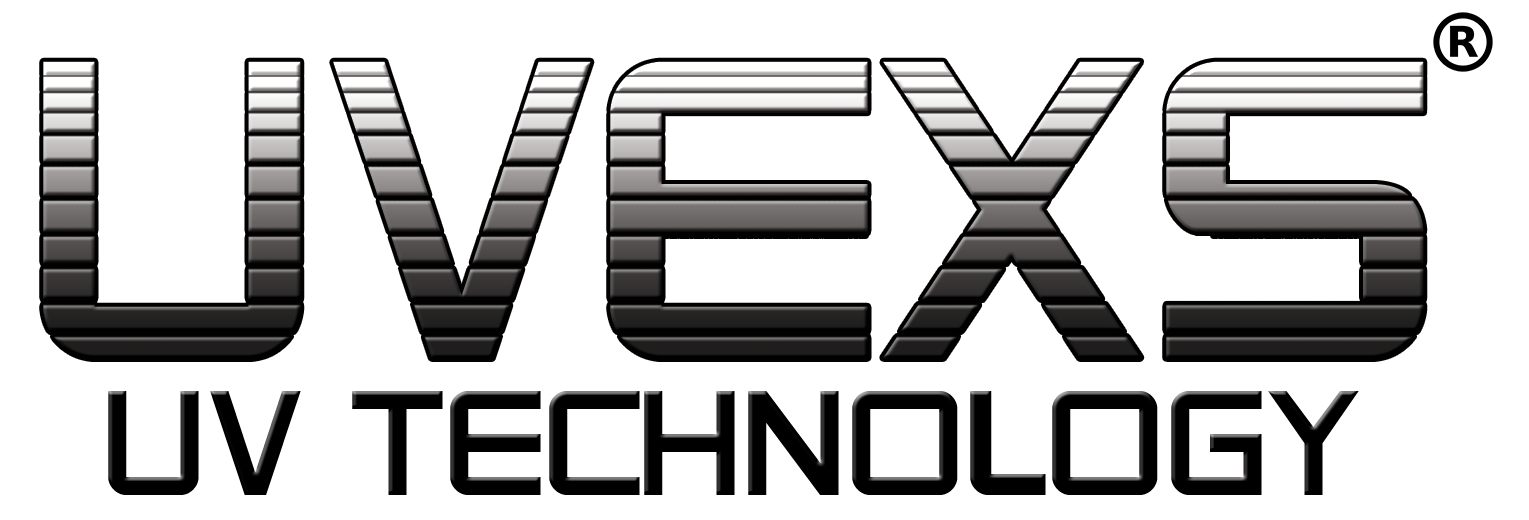UV Energy
UV Energy
Ultraviolet is within the electromagnetic spectrum, above visible light and below X-Rays, approximately 400 Nanometers (Nm) to 175 Nm wavelength. Although this is a contiguous range, some descriptions break it into bands, UVA, UVB and UVC.
Ultraviolet energy occurs naturally in sunlight although at a much lower intensity than that produced by Uvexs curing systems. UV is the part of the sun’s emissions that causes tanning or sunburns and creates vitamin D3 in the skin. As experienced on the earth’s surface, the UV component to sunlight includes all wavelengths from 175 – 400 Nm. At 254Nm, the sun’s intensity is typically less than 0.4 mW/cm2. At 365Nm, the sun’s intensity is typically less than 6 mW/cm2. In contrast, UV curing systems utilize a medium pressure mercury vapor lamp, which generates typically 300 mW/cm2 at 365Nm and 75 mW/cm2 at 254Nm. This very high intensity UV energy is what allows for rapid curing of UV adhesives, inks and coatings.
To be useful, UV must be generated, controlled and directed. Standard methods of generating UV are medium pressure mercury vapor lamps and, more recently, LED devices. Medium pressure mercury vapor lamps generate UV with specific energy peaks at specific wavelengths. 365 Nm and 254 Nm peaks are among those generated. LED, on the other hand only generate one wavelength depending on the LED design. Both methods have strong UV equipment applications. Further, with mercury vapor lamps the wave peaks can be shifted slightly by adding dopants. Along with the mercury bead placed in a lamp, Iron and gallium are often used to shift the wavelength. This is sometimes done to control the wavelength for specific applications.
UV curable chemistries have an ingredient called photo initiator. This ingredient, when excited by UV, causes the hydrocarbon chains in monomers, oligomers and resins to join, cross-link and intertwine (this is curing). The wavelengths that excite the photoinitiator determine which UV lamp to use; it’s a design choice. Often, the standard medium pressure mercury vapor lamp is used for the 365 Nm and 254 Nm components. 365 Nm provides depth of cure while 254 Nm assures surface cure.
Uvexs has many years experience generating, controlling and directing UV for a variety of manufacturing application. With this expertise, UV systems can be designed to take advantage of the UV source and the photoinitiator selection to design UV equipment to accomplish the curing task. Whether modular equipment or complete systems, understanding the basic UV requirements allows us to design, build and deliver cost effective UV products and systems.
See the application section of this site for some specific examples, then, contact Uvexs to discuss your UV energy needs.
